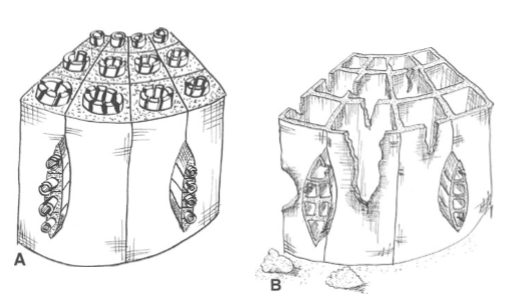
Another species which degrades the heartwood in trees. Less aggressive than Ganoderma applanatum, this species can remain present in a trees structure for decades without interfering with its physiological processes (USDA 2014). Fomitopsis pinicola is classified as a brown rot which principally degrades cellulose in the cell wall.

(Source: Springer; Fungal Strategies of Wood Decay in Trees)
Trees impacted by brown rot may become more brittle and prone to breakage in high winds and cannot be used for production timber. The same as white rot, brown rot species require exposed wounds in wood as a point of entry. Decay continues after the tree has died.
Worthy of mentioning due to its less aggressive decay characteristics. An example of how, when decay has been detected through the identification of a fruiting body, the prognosis is not the same across all species.